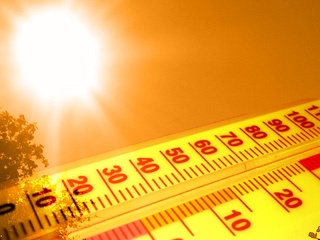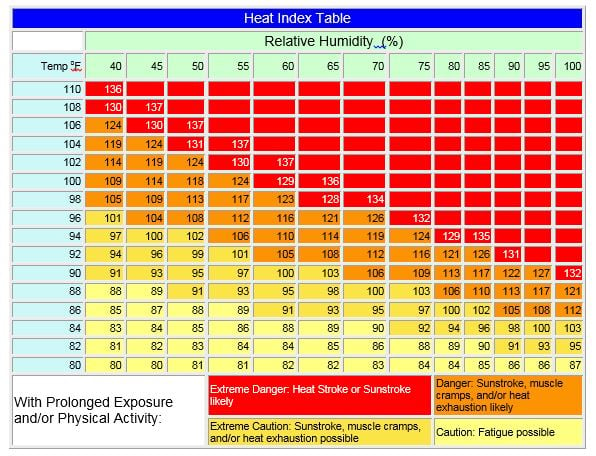Now that summer is here, are you and your workers ready for the HEAT?

In 2014, there were 2,630 heat related illnesses reported and 18 of those cases resulted in death from heat stroke and related causes. New workers accounted for more than 30% of the deaths and 40% of non-death related cases. The designation of ‘new worker’ also includes temporary workers and those workers returning to work from a week or more off.
As an employer, what can you do to keep your workers safe in the heat?
- Perform work in cooler parts of the day
- Allow workers to acclimate to the heat
- Encourage workers to drink water frequently
- Provide workers rest in shade or cooler locations
- Advise workers to wear a hat and light colored, loose fitting clothing
- Understand the signs and symptoms of heat illness
- Train workers on identification and prevention of heat illness
There are several types of heat related illnesses, with each stage progressing in severity:
Heat Rash – Symptoms include skin irritation. To treat, keep the affected area dry.
Heat Cramps- Symptoms include muscle cramps and pains or spasms in the abdomen, arms, or legs. To treat, remove the worker from the heat and have them drink water and sports fluids. If the symptoms persist, seek medical attention.
Heat Exhaustion – Symptoms include excessive sweating, rapid heartbeat, nausea, headache, and irritation. Remove the worker from the heat and provide water and rest. If symptoms persist for more than 60 minutes call for medical attention.
Heat Stroke –Symptoms include elevated body temperature, excessive sweating, confusion, fainting, and seizures. Call 911 immediately.
Below is a heat index chart showing various combinations of air temperature versus relative humidity:

To use the chart, locate the air temperature along the left column and the relative humidity along the top. The cell where the two intersect is the heat index.
For example, an air temperature of 90 degrees Fahrenheit and a relative humidity of 60 percent intersect at a heat index of 100 degrees. In other words, the temperature would feel like 100 degrees with this humidity/temperature combination.
Heat index values were devised for shady light wind conditions. Exposure to full sunlight can increase values by up to 15 degrees Fahrenheit.
OSHA offers a free APP to help in recognizing heat related illnesses and prevention at: https://www.osha.gov/SLTC/heatillness/index.html
You can also contact your Hausmann Johnson Insurance Risk Control Consultant for additional information.

COMMENTS